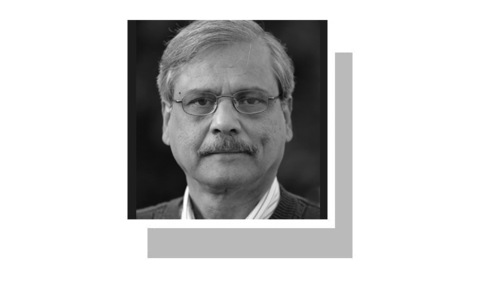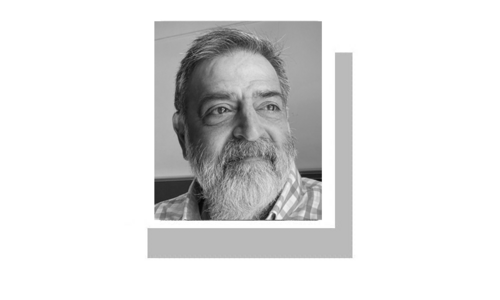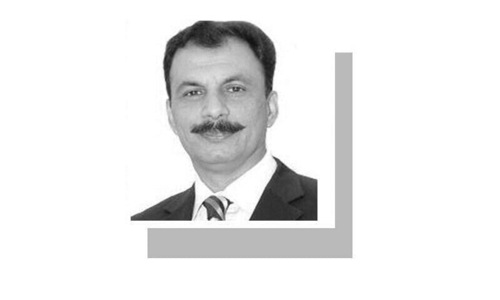LAHORE: As one of America's top forensic scientists, Mohammad Tahir uncovered evidence that helped jail boxer Mike Tyson for rape, convict serial killer John Wayne Gacy and clear doctor Sam Sheppard of murdering his wife.
Then Tahir took on his toughest assignment yet, applying his skills in Pakistan, a poor nation of 180 million people beset by crime and militancy.
But catching criminals is not Tahir's biggest problem. It's working with the country's antiquated criminal justice system.
 |
| A member of the crime scene investigation unit takes a photograph at a home that has been robbed in Lahore January 13, 2015. — Reuters |
The very notion of producing evidence is a newfangled concept for many involved in law enforcement in Pakistan.
Cases often rely on witnesses who are easily bribed or intimidated. Terrorism and murder suspects usually walk free.
 |
| A police officer fills out a form for evidence to be tested at the evidence-receiving unit at Punjab Forensic Science Agency in Lahore January 13, 2015. — Reuters |
So Tahir, a softly spoken man whose passions are reading and gardening, set out on a quest: to promote forensic science.
“Physical evidence does not lie, it does not perjure itself as humans do,” said the dapper 65-year-old. “It is a silent witness ... We make it speak in a court of law.”
Tahir, a dual Pakistani and US citizen, has his own forensics lab in the Unites States. He spent 36 years working with US police and helped write the FBI handbook on forensics.
 |
| Forensic scientists analyse samples in the Toxicology department at Punjab Forensic Science Agency in Lahore January 13, 2015. — Reuters |
In 2008, with militant attacks rising in Pakistan, Punjab's chief minister called Tahir and asked for help: to design a new $31 million forensics lab in the city of Lahore, handpick its scientists and try to enforce new standards of crime solving.
The lab was finished in 2012 and at first, business was slow. But now the lab, which is funded by Punjab state, takes around 600 cases a day, Tahir said.
 |
| Members of the crime scene investigation unit collect evidence from a possible arson attack at a shoe factory that burned down in Lahore January 14, 2015. — Reuters |
It could easily handle twice that if more police start sending in evidence or suspects.
“The police are not educated, they don't know our capabilities. We have to teach them,” he said.
Problems with police
The gleaming new lab quickly discovered only a tiny fraction of police knew how to secure crime scenes and collect evidence.
DNA samples were mouldy.
 |
| A police officer hands over a pistol used during a crime to the evidence receiving unit at Punjab Forensic Science Agency in Lahore January 13, 2015. — Reuters |
Guns arrived for analysis, smeared with officers' fingerprints.
“If garbage comes in, garbage goes out,” explained one scientist at the lab during a recent Reuters visit, as his masked colleague unwrapped a bone from a woman's body found in a canal.
 |
| A police officer talks to a member of the evidence receiving unit at Punjab Forensic Science Agency in Lahore January 13, 2015. — Reuters |
To change that, Tahir set up localised crime scene investigation units and began training police.
Now the DNA department says around half the samples they receive are packaged correctly.
“They are getting better,” Tahir said.
 |
| A member of the crime scene investigation unit from the Punjab Forensic Science Agency searches for equipment to use at a possible arson attack at a shoe factory that burned down in Lahore January 14, 2015. — Reuters |
So far 3,100 police out of a force of 185,000 have been trained.
But progress is slow. Punjab Police Inspector General Mushtaq Sukhera said police still secure “very few” crime scenes.
 |
| Forensic scientists practise classifying fingerprints at the fingerprint department at Punjab Forensic Science Agency in Lahore January 13, 2015. — Reuters |
One detective was even found fingerprinting himself instead of the suspects for dozens of cases, an official working with the judicial system said.
Some police try to game the system. A prosecutor and a scientist told Reuters that police sometimes plant bullets at the crime scene and the gun on the suspect.
Courts usually treat police as unreliable. Any confession made to them is legally inadmissible because suspects are frequently tortured. Police argue they are becoming better at playing by the book.
 |
| A forensic scientist analyses samples in the narcotics department at Punjab Forensic Science Agency in Lahore January 13, 2015. — Reuters |
“It used to be, you can say, a quick method of getting disclosure from the accused,” said Sukhera. “(But now) I think very rarely the police torture.” Tahir has banned police from entering the lab to make sure they do not interfere with the process.
When Reuters visited the lab, police waited patiently in the basement, some clutching white cloth packages sealed with twine and red wax.
 |
| A police officer shows bottles of suspected homemade alcohol as he waits at the evidence-receiving unit in Punjab Forensic Science Agency in Lahore January 13, 2015. — Reuters |
A dozen of them held bottles that were to be tested for alcohol, which is illegal in Pakistan. One had brought a pistol. Another held a box of body parts.
Court crisis
Once the lab makes a report, it goes to the prosecutor. But judges, lawyers and witnesses are often threatened or killed. Courts have a backlog of more than a million cases.
As a result, conviction rates are low. Anti-terrorism courts convict around a third of cases, about half of those are overturned on appeal.
 |
| A forensic scientist carries samples to analyse in the Toxicology department at Punjab Forensic Science Agency in Lahore January 13, 2015. — Reuters |
Fewer than a quarter of murder suspects are convicted.
But Tahir said that the lab has had some notable successes. One man confessed he poisoned his Scottish wife thanks to evidence from the toxicology and polygraph departments.
Two men claimed police planted suicide vests on them, but they were jailed after the lab's computer section recovered deleted videos from their phones confirming their wrongdoing.
 |
| A forensic scientist compares bullets at the ballistics department at Punjab Forensic Science Agency in Lahore January 13, 2015. — Reuters |
A man who raped and killed a 5-year-old in a mosque was identified by his DNA; seven other suspects were freed.
 |
| A forensic scientist analyses samples in the DNA and Serology department at Punjab Forensic Science Agency in Lahore January 13, 2015. — Reuters |
“On one hand, you have exonerated a man,” said Tahir. “On the other you have found someone who has actually committed a crime. Nothing makes you happier.”














































